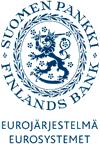 BOFIT Discussion Papers, Institute for Economies in Transition, Bank of Finland
BOFIT Discussion Papers, Institute for Economies in Transition, Bank of Finland
No 30/2011:
China’s evolving reserve requirements
Guonan Ma ()
, Yan Xiandong and Liu Xi
Abstract: This paper examines the evolving role of reserve
requirements as a policy tool in China. Since 2007, the Chinese central
bank (PBC) has relied more on this tool to withdraw domestic liquidity
surpluses, as a cheaper substitute for open-market operation instruments in
this period of rapid FX accumulation. China’s reserve requirement system
has also become more complex and been used to address a range of other
policy objectives, not least being macroeconomic management, financial
stability and credit policy. The preference for using reserve requirements
reflects the size of China’s FX sterilisation task and the associated cost
considerations, a quantity-oriented monetary policy framework challenged to
reconcile policy dilemmas and tactical considerations. The PBC often finds
it easier to reach consensus over reserve requirement decisions than
interest rate decisions and enjoys greater discretion in applying this
tool. The monetary effects of reserve requirements need to be explored in
conjunction with other policy actions and not in isolation. Depending on
the policy mix, higher reserve requirements tend to signal a tightening
bias, to squeeze excess reserves of banks, to push market interest rates
higher, and to help widen net interest spreads, thus tightening domestic
monetary conditions. There are, however, costs to using this policy tool,
as it imposes a tax burden on Chinese banks that in turn appear to have
passed a significant portion of this cost onto their customers, mostly
depositors and SMEs. However, the pass-through onto bank customers appears
to be partial.
Keywords: reserve requirements; sterilisation tools; monetary policy; net interest margin and spread; tax incidence; Chinese economy; (follow links to similar papers)
JEL-Codes: E40; E50; E52; E58; E60; H22; (follow links to similar papers)
50 pages, December 14, 2011
Before downloading any of the electronic versions below
you should read our statement on
copyright.
Download GhostScript
for viewing Postscript files and the
Acrobat Reader for viewing and printing pdf files.
Full text versions of the paper:
dp3011.pdf 
Download Statistics
Questions (including download problems) about the papers in this series should be directed to Päivi Määttä ()
Report other problems with accessing this service to Sune Karlsson ()
or Helena Lundin ().
Programing by
Design by Joachim Ekebom
 BOFIT Discussion Papers, Institute for Economies in Transition, Bank of Finland
BOFIT Discussion Papers, Institute for Economies in Transition, Bank of Finland
 BOFIT Discussion Papers, Institute for Economies in Transition, Bank of Finland
BOFIT Discussion Papers, Institute for Economies in Transition, Bank of Finland